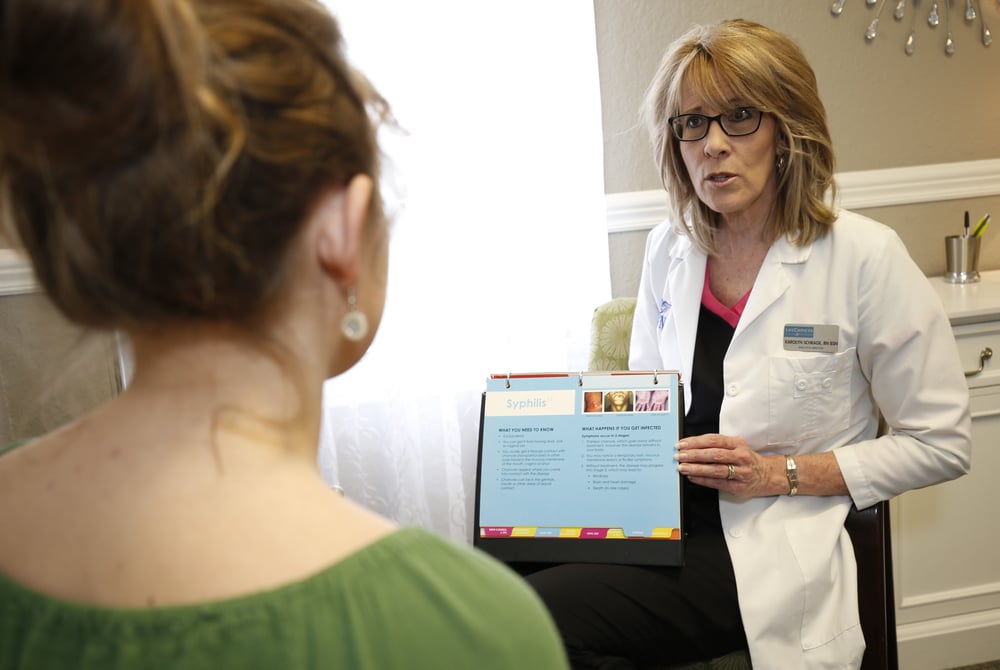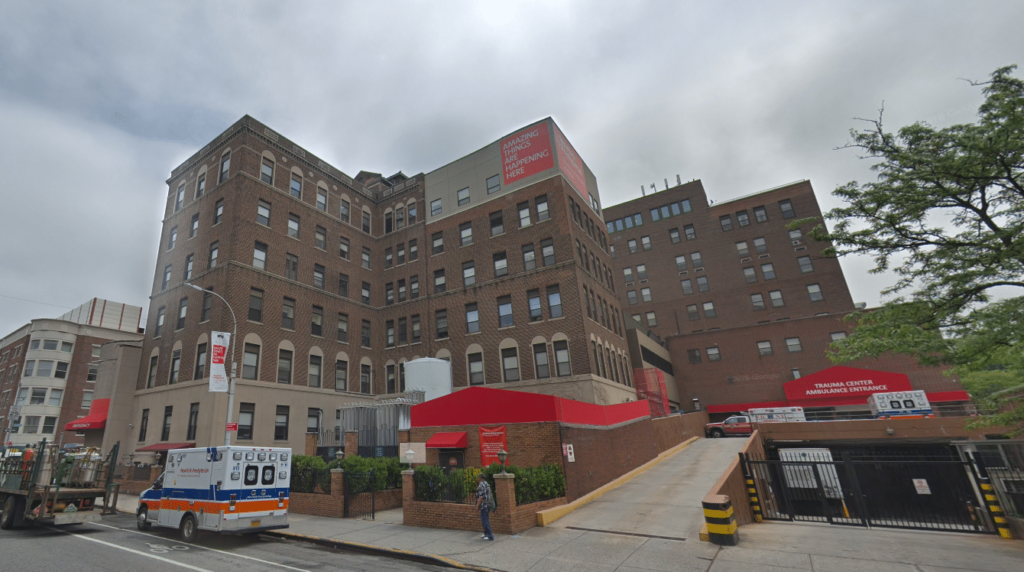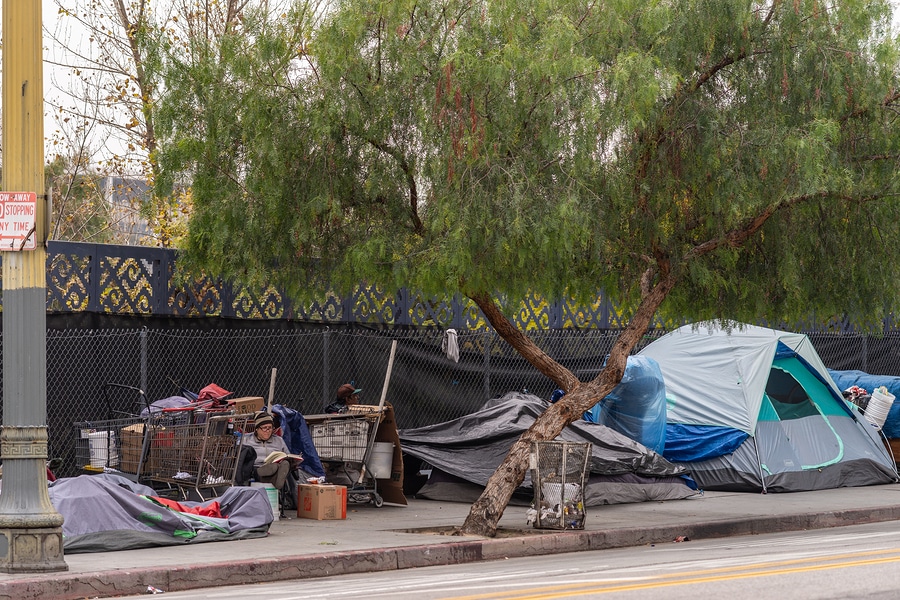How to Use a Compact Nursing License in Washington State

Washington takes a step towards growing the Enhanced Nurse Licensure Compact (ENLC), as the state has officially set a date that they will start allowing nurses with multistate licenses to start practicing.
Modern Healthcare Recognizes Staffing Agencies In ‘Best Places To Work’ 2019 List

Modern Healthcare, an organization that focuses on healthcare business news, analytics, research and data, released their annual ‘Best Places To Work in Healthcare’ awards list last Saturday, and several travel nursing and allied healthcare staffing agencies were named among the winners. The ‘Best Places To Work’ awards seek to identify and recognize outstanding healthcare employers on a national level, according to their website. Companies that choose to participate for the award are selected for the list through confidential employee surveys. The surveys measure key factors to success, like work-life balance, benefits and employee satisfaction. “Organizations making this year’s list of ‘Best Places to Work in Healthcare’ stand out in their efforts to create an empowered and satisfied workforce,” Modern Healthcare said in a recent post. “They did so by nurturing a sense of loyalty and building engagement.” The alphabetical list released recognizes 150 healthcare companies, and the official rankings will be released on September 26 at the Best Places To Work in Healthcare Gala. They will also be featured in a supplement published with Modern Healthcare’s Sept. 30 issue, according to the post. Among the winners, travel staffing agencies LiquidAgents Healthcare and Aya Healthcare are both repeat honorees. This marks the 11th year in a row that LiquidAgents Healthcare, based out of Plano, Texas, has been recognized as a ‘Best Place to Work’, according to their company press release. “It’s an honor to be recognized among the nation’s top healthcare companies to work for in the country,” LiquidAgents Healthcare CEO Sheldon Arora said in a press release. “We’ve established a unique, collaborative culture with a key focus in mind: to help employees be as successful as possible in their roles and careers. Our team’s positivity and dedication shine through in everything we do.” Aya Healthcare made the list for the third consecutive year, according to a company press release. President and CEO Alan Braynin said the recognition highlight’s Aya’s focus in providing an engaging and exciting workplace. “This recognition is a testament to our belief that giving employees freedom, flexibility and a voice is beneficial for the entire company, including the clinicians and clients we serve,” Braynin said in the release. Other staffing agencies that made the 2019 list include CHG Healthcare, MPLT Healthcare, and several other non-travel specific staffing companies. The full list can be viewed below or on the Modern Healthcare website. COMPANY LOCATION Abrom Kaplan Memorial Hospital Kaplan, La. American College of Cardiology Washington, D.C. Atlantic Health System Morristown, N.J. Bailey Medical Center Owasso, Okla. Beach Cities Health District Redondo Beach, Calif. Black River Memorial Hospital Black River Falls, Wis. Bridge Connector Nashville CAQH Washington, D.C. CareSource Dayton, Ohio Carolina Caring Newton, N.C. Catholic Health Services of Long Island Centre, N.Y. CHG Healthcare Midvale, Utah Choice Recovery Columbus, Ohio Cleveland Clinic Cleveland CollaborateMD Orlando, Fla. Conway Regional Health System Conway, Ark. Corazon Pittsburgh Cox Monett Hospital Monett, Mo. Crothall Healthcare Wayne, Pa. Deaconess-The Women’s Hospital Newburgh, Ind. Divurgent Virginia Beach, Va. Elevate Healthcare Consultants Plano, Texas Encompass Health – Home Health & Hospice Dallas Epion Health Hoboken, N.J. Equiscript North Charleston, S.C. Excel Health Philadelphia Forcura Jacksonville, Fla. Galen Healthcare Solutions Chicago Guadalupe Regional Medical Center Seguin, Texas Harmony Healthcare IT South Bend, Ind. Health By Design Medical Group San Antonio Health Catalyst Salt Lake City Health Recovery Solutions Hoboken, N.J. HealthFirst TPA Tyler, Texas HealthRise Southfield, Mich. Heart Care Imaging Tequesta, Fla. Heart ‘n Home Hospice Fruitland, Idaho Hendrick Health System Abilene, Texas Henry County Hospital Napoleon, Ohio Hillcrest Hospital Cushing Cushing, Okla. Hillcrest Hospital Henryetta Henryetta, Okla. Hillcrest Hospital Pryor Pryor, Okla. Hosparus Health Louisville, Ky. IEP (Independent Emergency Physicians) Farmington Hills, Mich. Impact Advisors Naperville, Ill. Imprivata Lexington, Mass. Infusion Express Brentwood, Tenn. Innovative Health Scottsdale, Ariz. Intelligent InSites West Fargo, N.D. J2 Interactive Charlestown, Mass. Jackson Physician Search Alpharetta, Ga. Jamestown Regional Medical Center Jamestown, N.D. Jellyfish Health Panama City, Fla. KeyBridge Medical Revenue Care Lima, Ohio King’s Daughters Medical Center Brookhaven, Miss. Landmark Health Huntington Beach, Calif. Lee’s Summit Medical Center Lee’s Summit, Mo. Lexington Regional Health Center Lexington, Neb. Licking Memorial Health Systems Newark, Ohio LiquidAgents Healthcare Plano, Texas LiveData Cambridge, Mass. Loma Linda University Medical Center-Surgical Hospital San Bernardino, Calif. Louisiana Organ Procurement Agency Covington Lovelace UNM Rehabilitation Hospital Albuquerque Lovelace Women’s Hospital Albuquerque Marathon Health Winooski, Vt. Medasource Royal Oak, Mich. Medical Advantage Group Ann Arbor, Mich. Medpricer Walnut Creek, Calif. Melissa Memorial Hospital Holyoke, Colo. Memorial Healthcare System Hollywood, Fla. Mercy Health-Tiffin Hospital Tiffin, Ohio Mercy Health-Willard Hospital Willard, Ohio Methodist Ambulatory Surgery Hospital San Antonio Metrolina Nephrology Associates Charlotte, N.C. Morrison Healthcare Sandy Springs, Ga. MPLT Healthcare Coral Springs, Fla. MTS Physical Therapy & Wellness Lafayette, La. Nathan Adelson Hospice Las Vegas National Medical Billing Services St. Louis Navin, Haffty & Associates Westborough, Mass. NCCPA (National Commission on Certification of Physician Assistants) Johns Creek, Ga. Neosho Memorial Regional Medical Center Chanute, Kan. Nova Healthcare Administrators Buffalo, N.Y. Pacific Companies Aliso Viejo, Calif. Parkview Huntington Hospital Huntington, Ind. Parkview LaGrange Hospital LaGrange, Ind. Parkview Noble Hospital Kendallville, Ind. Parkview Wabash Hospital Wabash, Ind. Parkview Whitley/Warsaw Hospital Columbia City, Ind. Pelham Medical Center Greer, S.C. Physicians Surgical Hospitals Amarillo, Texas Propeller Health Madison, Wis. Providence Holy Cross Medical Center Mission Hills, Calif. Providence Little Company of Mary Medical Center Torrance, Calif. Rendina Healthcare Real Estate Jupiter, Fla. Rio Grande Regional Hospital McAllen, Texas RiverView Health Crookston, Minn. Santa Rosa Consulting Franklin, Tenn. Seton Medical Center Harker Heights Harker Heights, Texas Shriners Hospitals for Children-Erie Erie, Pa. Signature Performance Omaha, Neb. Southern Tennessee Regional Health System-Pulaski Pulaski St. Bernards Medical Center Jonesboro, Ark. Stillwater Medical Center Stillwater, Okla. Sutter Amador Hospital Jackson, Calif. Sutter Roseville Medical Center Roseville, Calif. Tandigm Health West Conshohocken, Pa. TigerConnect Santa Monica, Calif. Tri-Cities Cancer Center Kennewick, Wash. TSI Healthcare Chapel Hill, N.C. Tulsa Spine & Specialty Hospital Tulsa, Okla. University Hospital & Clinics Lafayette, La. Uvalde Memorial Hospital Uvalde, Texas Wallowa County Health Care District Enterprise, Ore. Weber Human Services Ogden, Utah
‘John Doe’ Patients Sometimes Force Hospital Staff To Play Detective (KHN)

By Susan Abram and Heidi de Marco, Kaiser Health News The 50-something man with a shaved head and brown eyes was unresponsive when the paramedics wheeled him into the emergency room. His pockets were empty: no wallet, no cellphone, not a single scrap of paper that might reveal his identity to the nurses and doctors working to save his life. His body lacked any distinguishing scars or tattoos. Almost two years after he was hit by a car on busy Santa Monica Boulevard in January 2017 and transported to Los Angeles County+USC Medical Center with a devastating brain injury, no one had come looking for him or reported him missing. The man died in the hospital, still a John Doe. Hospital staffs sometimes must play detective when an unidentified patient arrives for care. Establishing identity helps avoid the treatment risks that come with not knowing a patient’s medical history. And they strive to find next of kin to help make medical decisions. “We’re looking for a surrogate decision-maker, a person who can help us,” said Jan Crary, supervising clinical social worker at L.A. County+USC, whose team is frequently called on to identify unidentified patients. The hospital also needs a name to collect payment from private insurance or government health programs such as Medicaid or Medicare. But federal privacy laws can make uncovering a patient’s identity challenging for staff members at hospitals nationwide. At L.A. County+USC, social workers pick through personal bags and clothing, scroll through cellphones that are not password-protected for names and numbers of family or friends, and scour receipts or crumpled pieces of paper for any trace of a patient’s identity. They quiz the paramedics who brought in the patient or the dispatchers who took the call. They also make note of any tattoos and piercings, and even try to track down dental records. It’s more difficult to check fingerprints, because that’s done through law enforcement, which will get involved only if the case has a criminal aspect, Crary said. Unidentified patients are often pedestrians or cyclists who left their IDs at home and were struck by vehicles, said Crary. They might also be people with severe cognitive impairment, such as Alzheimer’s, patients in a psychotic state or drug users who have overdosed. The hardest patients to identify are ones who are socially isolated, including homeless people — whose admissions to hospitals have grown sharply in recent years. In the past three years, the number of patients who arrived unidentified at L.A. County+USC ticked up from 1,131 in 2016 to 1,176 in 2018, according to data provided by the hospital. If a patient remains unidentified for too long, the staff at the hospital will make up an ID, usually beginning with the letter “M” or “F” for gender, followed by a number and a random name, Crary said. Jan Crary, supervising clinical social worker at Los Angeles County+USC Medical Center, leads a team who increasingly must play detective when patients cannot be identified. Other hospitals resort to similar tactics to ease billing and treatment. In Nevada, hospitals have an electronic system that assigns unidentified patients a “trauma alias,” said Christopher Lake, executive director of community resilience at the Nevada Hospital Association. The deadly mass shooting at a Las Vegas concert in October 2017 presented a challenge for local hospitals who sought to identify the victims. Most concertgoers were wearing wristbands with scannable chips that contained their names and credit card numbers so they could buy beer and souvenirs. On the night of the shooting, the final day of a three-day event, many patrons were so comfortable with the wristbands that they carried no wallets or purses. More than 800 people were injured that night and rushed to numerous hospitals, none of which were equipped with the devices to scan the wristbands. Staff at the hospitals worked to identify patients by their tattoos, scars or other distinguishing features, as well as photographs on social media, said Lake. But it was a struggle, especially for smaller hospitals, he said. The Health Insurance Portability and Accountability Act (HIPAA), a federal law intended to ensure the privacy of personal medical data, can sometimes make an identification more arduous because a hospital may not want to release information on unidentified patients to people inquiring about missing persons. In 2016, a man with Alzheimer’s disease was admitted to a New York hospital through the emergency department as an unidentified patient and assigned the name “Trauma XXX.” Police and family members inquired about him at the hospital several times but were told he was not there. After a week — during which hundreds of friends, family members and law enforcement officials searched for the man — a doctor who worked at the hospital saw a news story about him on television and realized he was the unidentified patient. Hospital officials later told the man’s son that because he had not explicitly asked for “Trauma XXX,” they could not give him information that might have helped him identify his father. Prompted by that mix-up, the New York State Missing Persons Clearinghouse drafted a set of guidelines for hospital administrators who receive information requests about missing persons from police or family members. The guidelines include about two dozen steps for hospitals to follow, including notifying the front desk, entering detailed physical descriptions into a database, taking DNA samples and monitoring emails and faxes about missing persons. California guidelines stipulate that if a patient is unidentified and cognitively incapacitated, “the hospital may disclose only the minimum necessary information that is directly relevant to locating a patient’s next-of-kin, if doing so is in the best interest of the patient.” At L.A. County+USC, most John Does are quickly identified: They either regain consciousness or, as in a majority of cases, friends or relatives call asking about them, Crary said. Still, the hospital does not always succeed. From 2016 to 2018, 10 John and Jane Does remained unidentified during their stays at L.A. County+USC. Some died at the hospital; others
Where To Find National Nurses Week Deals And Freebies

The theme of this year’s National Nurses Week celebration, which takes place from May 6-12, is “4 Million Reasons To Celebrate”, which highlights contributions of America’s 4 million registered nurses, according to the American Nurses Association website. Even if there are four million reasons, one of the best reasons for nurses to celebrate this week is that they get to cash in on tons of free food, giveaways and discounts! We’ve compiled a list of as many great National Nurses Week deals and freebies that we could find, but some are only available for a limited time. Editor’s note: We plan to update this page if we find more deals, so make sure to bookmark it and check back in throughout the week. Found a great deal you want to share? Submit it here or email it to us at news@hcttoday.com National Nurses Week Deals And Freebies Cinnabon May 6-11: Nurses can recieve a free MiniBon roll or four-count BonBites. Must show ID badge to receive free items. Sonny’s BBQ May 6: Complimentary Pork Big Deal at any of the chain’s 100 locations for nurses who can show their ID. MOD Pizza May 12: BOGO free deal on a MOD-size pizza or salad with a valid nurse ID. Only available for in-store orders. Uniform Advantage May 6-14: Up to 50 percent off on all products sitewide. Use the code “125FREE” to get free shipping on all orders over $125. Giordiano’s May 6-8: 20 percent off any order with the code 656-263-214. Offer valid for both dine-in and online and for both teachers and nurses. Enlightened Ice Cream May 6-12: Nurses or friends of nurses share their appreciation for all that nurses do by visiting this link: https://eatenlightened.com/pages/nurses-week. They can send themselves or their nurse friend a coupon for a free pint of ice cream or a free box of ice cream bars. PDQ Restaurant May 7: Teachers and nurses get 50 percent off their entire order with a valid ID at all PDQ locations. Hey, Teachers & Nurses! ☺️ On Tuesday, May 7th we’re hooking you up with 50% off your entire order with valid ID. Valid at all PDQ locations. pic.twitter.com/K1vpHWV0kr — PDQ Restaurant (@PDQFreshFood) May 3, 2019 Salata Salad Kitchen May 8: BOGO free offer Wednesday for nurses on salads and wraps with a valid ID on in-store orders. The free salad or wrap must be of equal or lesser value. Home Run Inn May 6-10: Teachers and nurses get 20 percent off their checks during Teacher Appreciation and National Nurses Week. Scooter’s Coffee May 6: 50 percent off any drink for all teachers and nurses. Cotton Patch Café May 6-10: 20 percent off on orders for all nurses when they show a valid ID. Sandals Resorts May 1-31: Sandals is giving away six-night, seven-day trips for free every day throughout the month of May to teachers, nurses and members of the military. Full giveaway details are here. DiscountGlasses.com May 6-12: 30 percent off any order with the code “HEARTNURSES30.” DiscountContactLenses.com May 6-12: 15 percent off contact lens orders with the code “HEARTNURSES15.”
As Syphilis Invades Rural America, A Fraying Health Safety Net Is Failing To Stop It (KHN)

By Lauren Weber, Kaiser Health News When Karolyn Schrage first heard about the “dominoes gang” in the health clinic she runs in Joplin, Mo., she assumed it had to do with pizza. Turns out it was a group of men in their 60s and 70s who held a standing game night — which included sex with one another. They showed up at her clinic infected with syphilis. That has become Schrage’s new normal. Pregnant women, young men and teens are all part of the rapidly growing number of syphilis patients coming to the Choices Medical Services clinic in the rural southwestern corner of the state. She can barely keep the antibiotic treatment for syphilis, penicillin G benzathine, stocked on her shelves. Public health officials say rural counties across the Midwest and West are becoming the new battleground. While syphilis is still concentrated in cities such as San Francisco, Atlanta and Las Vegas, its continued spread into places like Missouri, Iowa, Kansas and Oklahoma creates a new set of challenges. Compared with urban hubs, rural populations tend to have less access to public health resources, less experience with syphilis and less willingness to address it because of socially conservative views toward homosexuality and nonmarital sex. In Missouri, the total number of syphilis patients has more than quadrupled since 2012 — jumping from 425 to 1,896 cases last year — according to a Kaiser Health News analysis of new state health data. Almost half of those are outside the major population centers and typical STD hot spots of Kansas City, St. Louis and its adjacent county. Syphilis cases surged at least eightfold during that period in the rest of the state. At Choices Medical Services, Schrage has watched the caseload grow from five cases to 32 in the first quarter of 2019 alone compared with the same period last year. “I’ve not seen anything like it in my history of doing sexual health care,” she said. Back in 1999, the Centers for Disease Control and Prevention had a plan to eradicate the sexually transmitted disease that totaled over 35,000 cases nationwide that year. While syphilis can cause permanent neurological damage, blindness or even death, it is both treatable and curable. By focusing on the epicenters clustered primarily throughout the South, California and in major urban areas, the plan seemed within reach. Instead, U.S. cases topped 101,500 in 2017 and are continuing to rise along with other sexually transmitted diseases. Syphilis is back in part because of increasing drug use, but health officials are losing the fight because of a combination of cuts in national and state health funding and crumbling public health infrastructure. “It really is astounding to me that in the modern Western world we are dealing with the epidemic that was almost eradicated,” said Schrage. Grappling With The Jump Craig Highfill, who directs Missouri’s field prevention efforts for the Bureau of HIV, STD and Hepatitis, has horror stories about how syphilis can be misunderstood. “Oh, no, honey, only hookers get syphilis,” he said one rural doctor told a patient who asked if she had the STD after spotting a lesion. In small towns, younger patients fear that their local doctor — who may also be their Sunday school teacher or basketball coach — may call their parents. Others don’t want to risk the receptionist at their doctor’s office gossiping about their diagnosis. Some men haven’t told family members they’re having sex with other men. And still more have no idea their partner may have cheated on them — and their doctors don’t want to ask, according to Highfill. It’s even hard to expect providers who haven’t seen a case of syphilis in their lifetime to automatically recognize the hallmarks of what is often called the “great imitator,” Highfill said. Syphilis can manifest differently among patients, but frequently shows up for a few weeks as lesions or rashes — often dismissed by doctors who aren’t expecting to see the disease. Since 2000, the current syphilis epidemic was most prevalent among men having sex with men. Starting in 2013, public health officials began seeing an alarming jump in the number of women contracting syphilis, which is particularly disturbing considering the deadly effects of congenital syphilis — when the disease is passed from a pregnant woman to her fetus. That can cause miscarriage, stillbirth or birth deformities. Among those rising numbers of women contracting syphilis and the men who were their partners, self-reported use of methamphetamines, heroin or other intravenous drugs continues to grow, according to the CDC. Public health officials suggest that increased drug use — which can result in a pattern of risky sex or trading sex for drugs — worsens the outbreaks. That perilous trend is playing out particularly in rural Missouri, argues Dr. Hilary Reno, an assistant professor of medicine at Washington University School of Medicine in St. Louis who is researching syphilis transmission and drug use in the state. Tracking cases from 2015 through June 2018, she found that more than half of patients outside of the major metropolitan areas of Kansas City and St. Louis reported using drugs. Less Money, More Problems Federal funding for STD prevention has stayed relatively flat since 2003, with $157.3 million allocated for fiscal year 2018. But that amounts to a nearly 40% decrease in purchasing power over that time, according to the National Coalition of STD Directors. In Missouri, CDC annual funding has been cut by over $354,000 from 2012 to 2018 — a 17% decrease even as the number of cases quadrupled, Highfill said. Iowa, too, has seen its STD funding cut by $82,000 over the past decade, according to Iowa Department of Health’s STD program manager George Walton. “It is very difficult to get ahead of an epidemic when case counts are steadily — sometimes rapidly — increasing and your resources are at best stagnant,” Walton said. “It just becomes overwhelming.” Highfill bemoaned that legislatures in Texas, Oregon and New York have all allocated state money to raise
‘Sorry, I Don’t Have Any 8’s’: Nurses Slam State Senator On Social Media For ‘Nurses Play Cards’ Comments

UPDATE, 10:26 a.m., April 24, 2019 Washington Sen. Maureen Walsh released an official statement on the Washington State Senate Republican Caucus Website, apologizing for her comments last Tuesday. “I really don’t believe nurses at our critical access hospitals spend their days playing cards, but I did say it, and I wish I could reel it back,” Walsh said in the statement. You can read her full statement here: http://maureenwalsh.src.wastateleg.org/walsh-issues-statement-regarding-house-bill-1155/ Comments made by Washington Sen. Maureen Walsh during a recent debate about a bill regarding breaks and overtime for nurses spawned a massive wave of negative reactions over the weekend. Walsh made the comments during a Senate floor debate on Tuesday in opposition to SHB 1155, which would require uninterrupted meals and rest periods and would provide for stronger protections against mandatory overtime. Walsh argued for an amendment to the bill that would exclude rural critical access care hospitals, and said it would make it more difficult for those facilities to stay open. “By putting these types of mandates on a critical access hospital that literally serves a handful of individuals, I would submit to you those nurses probably do get breaks,” Walsh said. “They probably play cards for a considerable amount of the day.” The online backlash to Walsh’s comments from nurses around the country was swift and significant. Nurses and healthcare workers shared thousands of memes, Instagram posts, YouTube reaction videos and more over the Easter weekend in response, using hashtags #maureenwalsh and #nursesplaycards. A blog post condeming Walsh from the Washington State Nurses Association caused the organization’s website to crash over the weekend, as too many people tried to view the post at once, according to a USA Today report. “No, Senator, nurses are not sitting around playing cards. They are taking care of your neighbors, your family, your community,” Matthew Keller, WSNA’s director of nursing practice and health policy, said in the blog post. “And they do read the research: mandatory overtime is bad for patient care and it’s bad for your rural hospitals. With all due respect, Sen. Walsh: perhaps it’s time for you to put down the cards and pick up the literature.” Supporters created two petitions on Change.org, one calling for Walsh to shadow a nurse for a 12-hour shift, and another calling for her resignation. The shadowing petition had about 5,000 signatures by noon Saturday and has climbed to more than 560,000 as of Monday morning. Walsh told Tri-City Herald she regretted her comment and didn’t have any malicious intent when it was made. “I was tired,” Walsh said. “I said something I wish I hadn’t.” Walsh still supports an amendment to the bill that would exclude nurses at hospitals with fewer than 25 beds from uninterrupted breaks. An unamended version of the bill already passed through the state’s House, but will have to be reconciled in the Senate following a voice vote approval of a seperate amendment that would restrict state nurses to only working 8-hour shifts.
NYC Nurses Vote To Ratify Contract For Increased Pay, Safe Staffing Ratios

A majority of union nurses that work at NewYork-Presbyterian hospitals voted Thursday to ratify a four-year contract with the hospital that includes the establishment of minimum staffing ratios among other provisions, according to a Facebook post from the New York State Nurses Association (NYSNA). About 91 percent of the nurses at the hospital voted to ratify the contract agreement, according to the post. NYSNA members and representatives from some of the state’s largest hospitals reached the tentative contract agreement last Tuesday, ending a months-long feud and preventing a major nurse strike. The four-year contract includes a $100 million agreement to hire nearly 1,000 additional staff members at New York-Presbyterian Hospital, Montefiore, and Mount Sinai hospitals, a minimum wage increase of three percent annually and an extended window for nurse retiree health benefits. The provision of the contract praised the most by supporters on social media—and that was often the source of escalating tension between union members and the hospitals—was the agreement to create unit-specific staffing grids that would establish minimum nurse-to-patient ratios. This is the first time minimum staffing levels have been “spelled out in the contract with a meaningful enforcement mechanism,” according to a press release from NYSNA. Once both parties agree on the minimum staffing levels, a third-party arbitrator will be responsible for enforcing those levels and changing them based on patient census and acuity changes, according to the contract. Anthony Ciampa, first vice president of the New York State Nurses Association told the New York Times this agreement marks a groundbreaking achievement in addressing staffing issues statewide. “This is going to have a very positive impact, and it will be the trendsetter of the industry,” Ciampa told New York Times. “What we decide in these major city hospitals tends to set the framework for other hospitals.” Details of the full agreement can be view below:
Exemptions Surge As Parents And Doctors Do ‘Hail Mary’ Around Vaccine Laws (KHN)

By Barbara Feder Ostrov, Kaiser Health News SAN JOSE, Calif. — At two public charter schools in the Sonoma wine country town of Sebastopol, more than half the kindergartners received medical exemptions from state-required vaccines last school year. The cities of Berkeley, Santa Cruz, Nevada City, Arcata and Sausalito all had schools in which more than 30% of the kindergartners had been granted such medical exemptions. Nearly three years ago, with infectious disease rates ticking up, California enacted a fiercely contested law barring parents from citing personal or religious beliefs to avoid vaccinating their children. Children could be exempted only on medical grounds, if the shots were harmful to health. Yet today, many of the schools that had the highest rates of unvaccinated students before the new measure continue to hold that alarming distinction. That’s because parents have found end runs around the new law requiring vaccinations. And they have done so, often, with the cooperation of doctors — some not even pediatricians. One prolific exemption provider is a psychiatrist who runs an anti-aging clinic. Doctors in California have broad authority to grant medical exemptions to vaccination, and to decide the grounds for doing so. Some are wielding that power liberally and sometimes for cash: signing dozens — even hundreds — of exemptions for children in far-off communities. “It’s sort of the Hail Mary of the vaccine refusers who are trying to circumvent SB 277,” the California Senate bill signed into law by Gov. Jerry Brown in 2015, said Dr. Brian Prystowsky, a Santa Rosa pediatrician. “It’s really scary stuff. We have pockets in our community that are just waiting for measles to rip through their schools.” The number of California children granted medical exemptions from vaccinations has tripled in the past two years. Across the nation, 2019 is shaping up to be one of the worst years for U.S. measles cases in a quarter-century, with major outbreaks in New York, Texas and Washington state, and new cases reported in 12 more states, including California. California’s experience underlines how hard it is to get parents to comply with vaccination laws meant to protect public safety when a small but adamant population of families and physicians seems determined to resist. When Senate Bill 277 took effect in 2016, California became the third state, after Mississippi and West Virginia, to ban vaccine exemptions based on personal or religious beliefs for public and private school students. (The ban does not apply to students who are home-schooled.) In the two subsequent years, SB 277 improved overall child vaccination rates: The percentage of fully vaccinated kindergartners rose from 92.9% in the 2015-16 school year to 95.1% in 2017-18. But those gains stalled last year due to the dramatic rise in medical exemptions: More than 4,000 kindergartners received these exemptions in the 2017-18 school year. Though the number is still relatively small, many are concentrated in a handful of schools, leaving those classrooms extremely vulnerable to serious outbreaks. Based on widely accepted federal guidelines, vaccine exemptions for medical reasons should be exceedingly rare. They’re typically reserved for children who are allergic to vaccine components, who have had a previous reaction to a vaccine, or whose immune systems are compromised, including kids being treated for cancer. Run-of-the-mill allergies and asthma aren’t reasons to delay or avoid vaccines, according to the U.S. Centers for Disease Control and Prevention. Neither is autism. Before California’s immunization law took effect, just a fraction of 1% of the state’s schoolchildren had medical exemptions. By last school year, 105 schools, scattered across the state, reported that 10% or more of their kindergartners had been granted medical exemptions. In 31 of those schools, 20% or more of the kindergartners had medical exemptions. The spike in medical exemptions is taking place amid a politically tinged, often rancorous national conversation over vaccines and personal liberty as measles resurges in the U.S. and worldwide. At least 387 cases of measles had been reported nationwide through March 28, according to the CDC. In California, 16 cases had been reported, two of them requiring hospitalization. The problem in California, state officials say, is how the immunization law was structured. It removed the ability of parents to cite “personal belief” as a reason for exempting their children from vaccine requirements in day care and schools. Exemptions now must be authorized by a licensed physician who provides a written statement citing a medical condition that indicates immunization “is not considered safe.” But the law does not specify the conditions that qualify a student for a medical exemption, nor does it require physicians to follow federal guidelines. The wording has led to a kind of gray market in which parents share names of “vaccine-friendly” doctors by word of mouth or in closed Facebook groups. And some of those doctors are granting children blanket exemptions — for all time and all vaccines — citing a range of conditions not supported by federal guidelines, such as a family history of eczema or arthritis. Amid growing concerns about suspect exemptions, the California Department of Public Health recently launched a review of schools with “biologically unlikely” numbers of medical exemptions, said the agency’s director, Dr. Karen Smith. Doctors who have written questionable exemptions will be referred to the Medical Board of California for possible investigation. The medical board, which licenses doctors, has the authority to levy sanctions if physicians have not followed standard medical practice in examining patients or documenting specific reasons for an exemption. In recent years, however, the board has sanctioned only one doctor for inappropriately writing a medical vaccine exemption in a case that made headlines. Since 2013, the board has received 106 complaints about potentially improper vaccine exemptions, including nine so far this year, said spokesman Carlos Villatoro. One pending case involves Dr. Ron Kennedy, who was trained as a psychiatrist and now runs an anti-aging clinic in Santa Rosa. Medical board investigators took the unusual step of subpoenaing 12 school districts for student medical records after receiving complaints that Kennedy
New Ohio Legislation Would Ban Mandatory Overtime For Nurses

An Ohio House legislator introduced a new bill in March that would ban mandatory overtime for nurses, a move which supporters claim could greatly reduce mistakes at the bedside and increase nurse retention rates. If House Bill 144 is approved, Ohio would become the 19th state to implement a mandatory overtime ban for registered nurses and licensed practical nurses. “House Bill 144 stands up for Ohio’s nurses, which play a crucial and influential role in the treatment of patients,” Republican Rep. Don Manning, who introduced the legislation, said in a press release. “This bill makes patient safety the highest priority, and no one should have their nursing license or employment threatened for declining unscheduled overtime after a scheduled shift.” A ban on mandatory overtime means employers could not use it as a condition of employment, and nurses would be protected from discipline, retaliation or termination for choosing to not work overtime, according to the bill’s text. A similar bill was introduced in 2018 and passed the House almost unanimously, but failed to garner enough support in the Senate before the end of the legislative session. The Ohio Nurses Association announced their support of the bill in a recent press release. The union argues this legislation would help reduce work fatigue, and pointed out how studies have found a correlation between fatigue and an increased chance of medical errors. “…Furthermore, nurse burnout increases with regular extended shifts, leading to costly nurse-turnover for healthcare facilities,” Brian Burger, President of the Ohio Nurses Association stated in a press release. “The needs and safety of the patient and nurse need to be put first instead of trying to cut initial costs by using mandatory overtime to plug nurse staffing holes.” The Ohio Hospital Association has not released a statement about the current bill, but did argue against the 2018 version of the bill, according to a Becker’s Hospital Review report.
California Hospitals See Massive Surge In Homeless Patients (KHN)

By Phillip Reese, Kaiser Health News Homeless patients made about 100,000 visits to California hospitals in 2017, marking a 28% rise from two years earlier, according to the most recent state discharge data. More than a third of those visits involved a diagnosis of mental illness, according to the Office of Statewide Health Planning and Development. By contrast, 6% of all hospital discharges in California during that time involved a mental health diagnosis. Health officials and homeless advocates attribute the trend to the surging number of people living homeless in California in recent years. From 2015 to 2017, the state’s homeless population grew by about 16%, to 134,000, according to point-in-time reports compiled by the U.S. Department of Housing and Urban Development. Those figures cover only a single day, and homeless advocates argue far more Californians experience homelessness at some point over the course of a year. Many researchers say California’s skyrocketing housing costs have helped drive the overall spike in homelessness. Studies also indicate that more than a quarter of people living on the streets are dealing with mental illness. Besides mental illness, a disproportionate number of homeless were hospitalized for treatment of HIV infections, alcohol and drug addictions, skin disorders, burns, drug overdoses and traumatic injuries. “The folks who are living in the streets are sicker than the general public,” said Christie Gonzales, director of behavioral health operations for Wellspace Health. Wellspace Health provides respite care to homeless patients in the Sacramento region after they are discharged from the hospital. “We tend to see more of them with injuries and trauma, co- occurring with alcohol and drug problems,” Gonzales said. Los Angeles County saw the most discharges involving homeless patients in 2017, with 35,234, followed by San Diego, Sacramento, Orange and San Francisco counties. The number of homeless patients treated in L.A. County grew by about 7,500 from 2015 to 2017, the largest numerical increase in the state. (That is largely due to the county’s size; the percentage growth in L.A. County homeless discharges was similar to the state average.) Among places with at least 5,000 hospital discharges in 2017, the counties with the highest proportion of discharges involving homeless patients were San Francisco, Yolo, Santa Cruz and Humboldt. In all four counties, homeless discharges made up at least 4% of all hospital discharges. “There is no housing out here,” said Nicole Ring-Collins, who manages a winter shelter program for Mercy Coalition of West Sacramento in Yolo County. “It is so expensive.” Providers who work with homeless people say it is no surprise they end up hospitalized at disproportionate rates. Living in deep poverty can lead to health problems. Many homeless people are driven to the streets by health issues, particularly mental illness and drug addiction. Most of their inpatient health care is paid for through Medi-Cal, the state-federal insurance program for the poor, or Medicare, the government insurance program for seniors and people with disabilities. “When folks are forced to live outside with no shelter, the trauma they experience can result in more medical issues,” said Noel Kammermann, executive director of Loaves and Fishes, a homeless services agency in Sacramento. Often, people living homeless do not see the doctor until they have a serious problem, Kammermann said. That lack of preventive care can lead to hospital stays. And living on the streets makes it all the more challenging to follow post-discharge instructions for rehabilitation and recovery. “You heal better at home,” said Peggy Wheeler, a vice president at the California Hospital Association. Homeless patients struggle after discharge when they “have to go right back out to the street for a wound that needs to heal or medicine that needs to be taken on a regular schedule,” she added. Hospitals across the state are working to provide respite care to the homeless after discharge, similar to the collaborative program at Wellspace in the Sacramento region, Wheeler said. Hospitals design such programs to lower readmission rates. The homeless “are more vulnerable to other things because they don’t have a home to go to convalesce,” said Trina Gonzalez, director of community integration at UC Davis Health. “We want to make sure they are connected to the appropriate follow up care.” Phillip Reese is a data reporting specialist and an assistant professor of journalism at California State University-Sacramento. This KHN story first published on California Healthline, a service of the California Health Care Foundation. Kaiser Health News (KHN) is a national health policy news service. It is an editorially independent program of the Henry J. Kaiser Family Foundation which is not affiliated with Kaiser Permanente.
